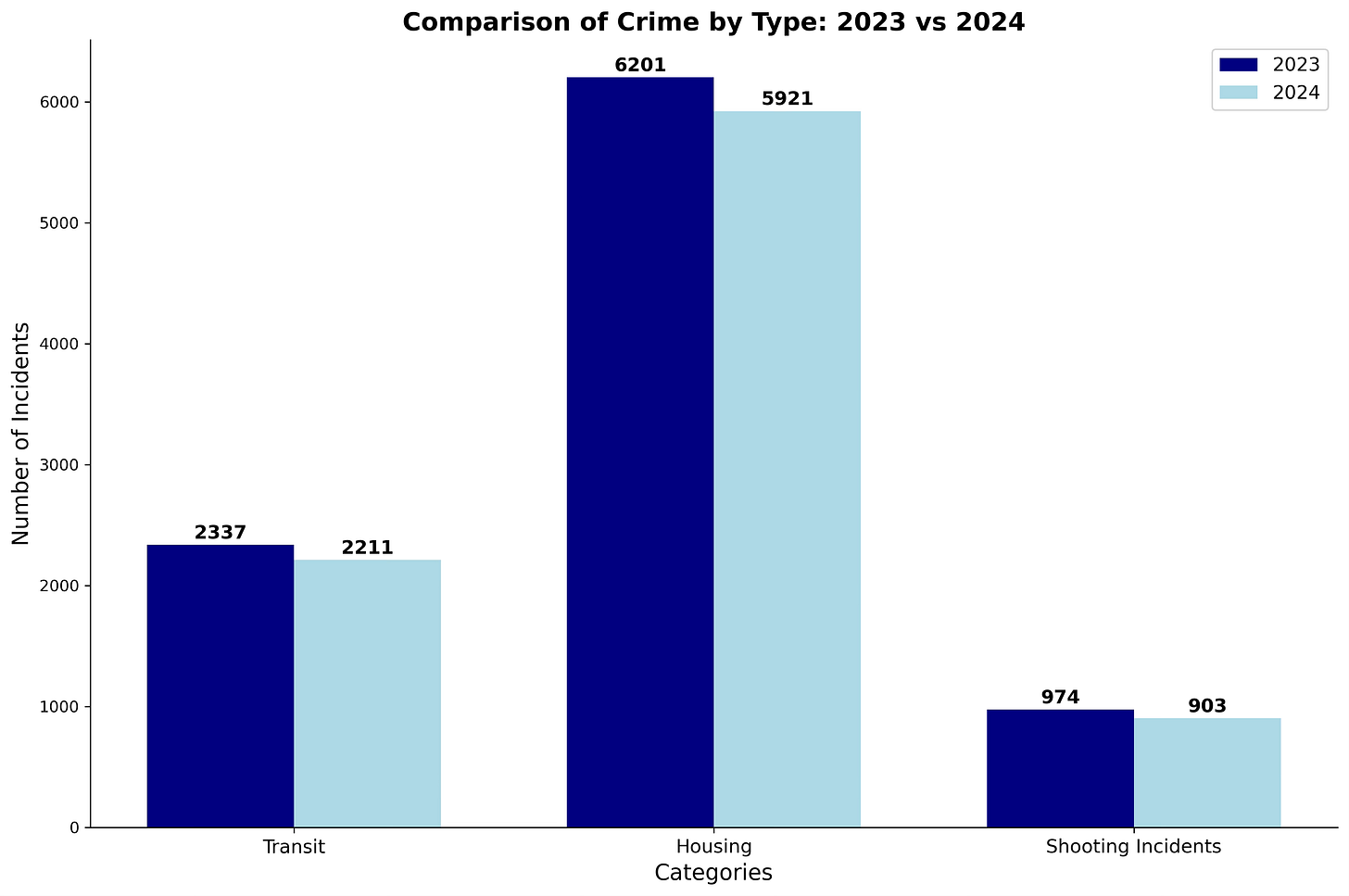NYC Sends In More Cops to Address Subway Crime and Commuter Fears
Despite a drop in subway crime, high-profile violent incidents have left riders on edge. Officials hope increased police presence will ease concerns.
In a move to restore public confidence in the subway system, New York City is deploying 200 additional NYPD officers to patrol platforms and trains, targeting the stations with the highest crime rates. This decision aims to improve commuter safety and address growing public concern of rampant subway crime following a series of violent incidents.
Despite a reported 5.4% drop in major subway crimes between 2023 and 2024, troubling incidents have left riders shaken.
"The subways will always be a bellwether for the perception of public safety in New York City. Declining crime numbers are significant, but we still must do more because people don't feel safe in our subways," said Police Commissioner Jessica Tisch at a recent NYPD press conference. "Effective this week, I've directed that we move more than 200 officers onto the trains to do specialty train patrols."
Mayor Eric Adams echoed the sentiment, acknowledging the disconnect between statistics and public perception.
"In the month of December alone, we saw the largest one-month decrease since February 2021. And 2024 also marked the second consecutive year of declines in crime in our subway system," said Adams in another press conference. "But I continue to say over and over again: the numbers are not just the answer. We must match the numbers with the perception and feeling safe in the system."
The subway system experienced ten homicides last year, matching a 25-year high.
One of the most shocking cases was the December 22 murder of 61-year-old Debrina Kawam, who was fatally set on fire aboard a Brooklyn train. The suspect, 33-year-old Sebastian Zapeta-Calil, has been charged with first-degree murder and arson. The case has become a grim symbol of the challenges facing the transit system.
In light of such incidents, the Guardian Angels, a volunteer safety patrol group, founded by Curtis Sliwa, have resumed operations in the subway.
“Stop with the nonsense of the analytics crime is down — what a joke,” said Sliwa to amNewYork Metro. “We’re going to show the city and the state what they should be doing.”
When asked about the perception of subway crime at an MTA press conference Chair Janno Lieber also stressed the need for systemic reforms.
“I am pushing for the criminal justice system to do more to keep the small number of people who tend to be recidivists out of the public space,” said MTA Chair Lieber. “I don't think that people who keep breaking the rules in the public space and making people feel unsafe ought to be at large.”
Opinions among New Yorkers on increased police presence remain divided. While some commuters welcome the move, others express frustration over perceived ineffectiveness.
"I definitely think having more police on the subways after normal rush hours would go a long way to make riders feel safer,” said Clinton Hill resident Audrey C. “It would act as a deterrent to those who might commit crimes.”
Not all are convinced and remain skeptical of the NYPD’s impact.
"They're a nuisance rather than a strong presence,” said Kinna LeBlanc of Crown Heights, citing instances where officers failed to respond to disturbances. “They do nothing, not even intimidate."
The effort to add more cops to the subway is part of a broader strategy to improve safety and restore public confidence in the subway system, addressing both actual crime rates and the perception of safety among riders.
As the city implements these measures, residents and commuters are urged to stay vigilant and report any suspicious activity.



